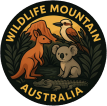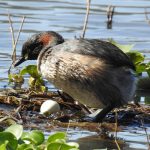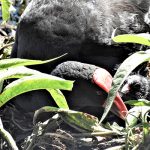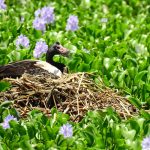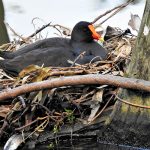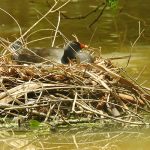FLOATING NESTS
Imagine gliding gently through a maze of water lilies, the sunlight dappling through paperbark trees and reeds. There, amid the tranquil water, you glimpse a remarkable creation—a nest delicately balanced on the surface, cradling its precious cargo. In Australia, several birds have mastered the art of constructing floating nests , a unique adaptation to the country’s varied and often watery landscapes.
What are Floating Nests?
A floating nest is a nest built atop vegetation or debris that sits directly on the surface of water. These ingenious structures rise and fall with water levels, protecting eggs and chicks from ground-based dangers and sudden flooding. Birds use buoyant plant materials—such as reeds, rushes, and aquatic leaves—to weave these nests, creating a safe, stable haven.
The Art of Floating Nest Construction
Materials Used
- Soft reeds and grasses
- Water plants and decaying vegetation
- Feathers, sometimes incorporated for insulation
Construction Process
- Birds gather buoyant, interlocking plant matter.
- They weave and layer the materials, often anchoring the nest to a branch, reed, or stump.
- The resulting structure is resilient to moderate waves and changes in water levels.
Sensory Experience
- Sight: A tangle of green and brown, merging with the wetland’s hues.
- Sound: Soft splashes as birds bring material, gentle calling of mates.
- Touch: Slight give and springiness—perfect for cradling vulnerable eggs.
Why Floating Nests?
Floating nests offer many advantages:
- Flood Protection: Rise and fall with water, keeping eggs safe from drowning.
- Predator Defence: Harder for many predators to reach.
- Thermal Comfort: Moisture and plant cover help regulate temperature.
Conservation Perspective
Wetlands are essential for floating nest builders. Protecting these habitats from pollution, draining, and invasive species ensures a future for the birds who depend on this delicate balance.
- Simple Actions: Supporting wetlands conservation and responsible water use can safeguard the homes of these unique birds.
- Why It Matters: Each floating nest is a testament to adaptation, resilience, and the extraordinary ingenuity of Australian wildlife.
Examples
| Bird Species | Scientific Name | Nesting Material | Habitat Type |
|---|---|---|---|
| Australasian Grebe | Tachybaptus novaehollandiae | Water weeds, reeds | Lakes, ponds, billabongs |
| Great Crested Grebe | Podiceps cristatus australis | Aquatic plants | Lakes, wetlands |
| Dusky Moorhen | Gallinula tenebrosa | Reeds, rushes, grasses | Urban ponds, swamps, creeks |
| Eurasian Coot | Fulica atra australis | Reeds, rushes, green weeds | Reed beds, swamps, lakes, reservoirs |
The next time you visit a still pond or tranquil wetland in Australia, pause quietly by the water’s edge. You might spot the subtle handiwork of nature—floating nests that quietly tell a story of adaptation, survival, and the intricate connection between land and water. Observing these birds at work is a gentle reminder of the wonders of the natural world, and the importance of preserving their watery domains for generations to come.
